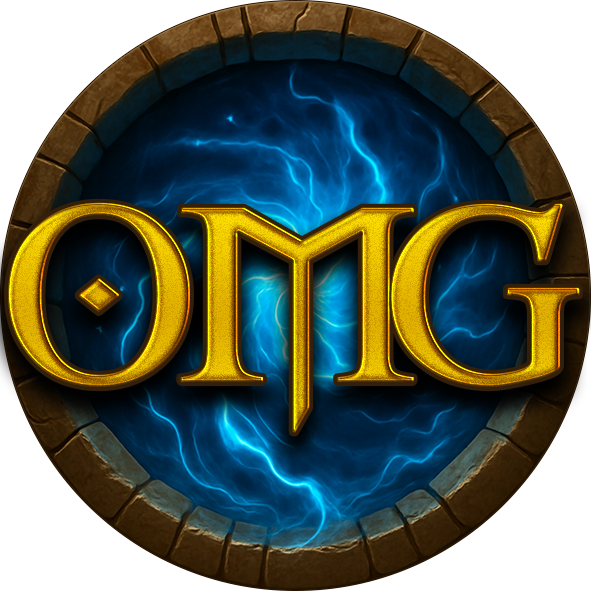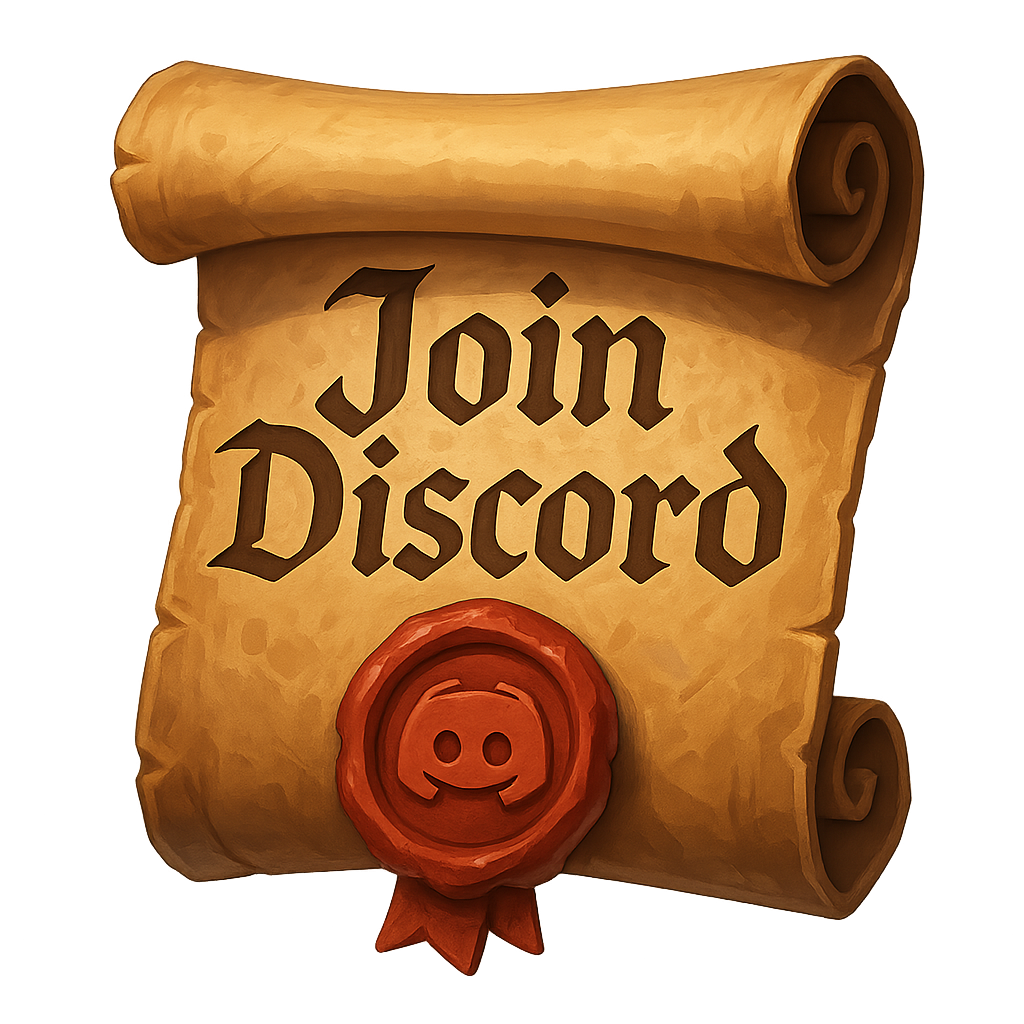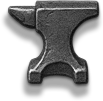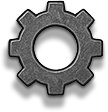CARD ANATOMY: HOW TO READ A CARD IN OMG
- Old Mana Game

- Jun 15
- 7 min read
Updated: Jun 30

Old Mana Game uses a unified and intuitive card layout across all card types. This layout ensures that players can quickly understand what a card does, what it costs, and how it functions in play. Whether you are summoning a hero, casting a spell, or equipping a weapon, every element of the card has a specific purpose and visual consistency.
General Card Anatomy

Mana Cost (Top Left Corner)
The blue circular symbol in the upper left shows the card’s mana cost. This number tells you how much mana you must spend from your available pool in order to play the card.
Card Type and Subtype (Top Line)
Displayed in yellow at the top of each card, this line defines the general category of the card. Examples include Hero, Weapon, Armor, Ability, and Ally. Many cards also include a subtype, such as Spell, Trap, Zone, Counter, Two-Handed, or Ally. In the case of Heroes & Allies, this line also includes their race and class, such as "Orc, Pirate" or "Elf, Druid".
Card Name (Banner Area)
Each card’s name appears in a scroll-like banner in the center of the card. This is the card’s official name and is used to identify it during play.
Effect Text (Main Box)
The large parchment field below the name contains the card’s effect. This describes what the card does, whether it's an ongoing effect, a triggered reaction, or an activated ability. Line breaks are preserved to ensure clarity. Some cards include conditions such as “After Attack” or “If your hero drops below 3 health.”
Stat Icons (Bottom Corners)
Cards that represent units, heroes, or weapons often include stats represented by small icons in the corners of the card:
Attack (sword icon): The amount of damage the card can deal.
Health (blood drop icon): The amount of damage the card can take before being removed.
Armor (shield icon): Prevents damage; often found on Armor cards.
Durability (anvil icon): Indicates how many uses a Weapon can sustain before breaking.
Duration (gear icon): The number of rounds a Spell, Zone, or Trap effect remains active.
If a particular stat is not shown on the card, it means that value does not apply.
Rarity (Gem in Bottom Center)
At the bottom center of the card is a gem that visually indicates the card’s rarity. The color corresponds to the following categories:
Gray: Common
Blue: Rare
Purple: Epic
Orange: Legendary
Rarity affects both deckbuilding and overall card power. Legendary cards are typically unique, with strong or game-altering effects.
Set and Card ID (Bottom Edge)
In the lower left, you'll find the name of the card set, such as "Founders", followed by the card's position within the set (e.g., 126/550). This helps players and collectors identify cards in larger collections.
Archetype (Hidden Attribute)
Every card belongs to an archetype, such as Nature, Sorcery, War, or Outlaw. Although the archetype is not visually printed on the card face, it is used for deck-building restrictions, synergy mechanics, and sorting. It's visible by the color of the card. For example, a Nature deck is green, a War deck Red. and so on.
Examples by Card Type

Hero – Skarn Deadwake
Skarn Deadwake is a unique card that can be played in two different ways depending on how you use him: either as your chosen Hero (your avatar for the game), or as a regular Ally within your deck. This dual-functionality is indicated by the card’s type line: “Hero · Ally – Orc, Pirate”.
Hero Mode (Avatar):
If you choose Skarn as your Hero at the start of the game, he becomes your avatar. In this mode, he does not use the printed attack and health values from the card. Instead, all Heroes start with 0 Attack and 30 Health. To deal damage, your Hero must equip Weapons. Any card that says "Pay 2 –" in the effect box becomes a reusable ability that you can activate once per round by paying 2 mana. In Skarn’s case, this means: you can pay 2 mana after attacking with a weapon to summon a 2/1 skeleton pirate with charge, once per round.
Ally Mode (Regular Card):
If you include Skarn in your deck and play him like a normal card (not as your Hero), he functions as an Ally. He enters the battlefield for 5 mana with 4 Attack and 5 Health, just like any other unit. In this case, the effect works passively: every time he attacks, he can summon a skeleton pirate with the same effect — but no activation cost is required.
Summary:
As Hero: 0 Attack, 30 Health. Effect must be paid for (Pay 2) and is limited to once per round.
As Ally: 4 Attack, 5 Health. Effect triggers after each attack automatically.
Card Details:
Archetype: Outlaw
Type: Hero · Ally – Orc, Pirate
Mana Cost: 5
Effect: Pay 2 – After Attack: Summon a 2 / 1 skeleton pirate with charge.
Rarity: Legendary
This flexibility makes Skarn a compelling choice: as a Hero, he offers long-term board presence through repeatable summons; as an Ally, he brings immediate aggression and value to any Outlaw deck.

Spell – Chrono Fracture
Spells are one-time-use Ability cards that take effect immediately when played. They are not equipped or placed on the battlefield, and they do not persist beyond their effect. Spells can deal damage, alter resources, summon units, or apply control effects to disrupt your opponent’s strategy.
Type: Ability · Spell
Mana Cost: 2
Effect: “Your opponent can’t draw any cards next turn.”
Rarity: Rare
Archetype: Sorcery
How it works:
Chrono Fracture is a tempo-disruption tool. When played, it targets your opponent’s next turn by preventing all card draws for that round. This includes their default draw at the beginning of their turn and any other effects that would allow them to draw cards during that time.
Timing:
The card must be played during your own turn, and its effect is applied to your opponent’s next turn. It does not block cards already in hand, but it limits their options for refreshing resources or seeking solutions.
Strategic Use:
This Spell is particularly powerful when used to punish greedy hands, stop combo decks from digging, or delay your opponent’s recovery after a board clear. It synergizes well with tempo decks that aim to maintain control through disruption rather than brute force.
Spell Characteristics:
Once cast, the Spell is discarded and has no lasting presence on the board.
Spells are affected by cards that reduce Ability costs or interact with the Spell subtype.
Because they are fast and low-commitment, Spells are commonly included in decks to provide flexibility and tactical surprise.

Weapon – Staff of the Wild
Weapons in Old Mana Game are items your Hero can equip to gain attack power or passive abilities. Weapons are categorized by slot: either Main Hand, Off-Hand, or Two-Handed. Equipping a weapon consumes one or two of your available weapon slots depending on its type.
You can equip a maximum of two Weapon cards at any given time. If you equip a Two-Handed weapon, it uses both slots and replaces any previously equipped weapons.
Staff of the Wild is a Two-Handed weapon with high attack value and a powerful support effect.
Type: Weapon · Two-Handed
Mana Cost: 4
Effect: “Your abilities cost 2 less while this is equipped.”
Stats: 5 Attack / 2 Durability
Rarity: Epic
Archetype: Nature
How it works:
While equipped, this staff reduces the mana cost of all your ability cards by 2, effectively making your spells and traps significantly cheaper to play. It provides both offensive potential through its high attack and spell synergy for ability-focused decks.
Slot Limitation:
Being Two-Handed, this weapon occupies both weapon slots. It cannot be equipped alongside a Main Hand or Off-Hand item. If you equip a new weapon, the old one is automatically replaced.
Strategic Use:
This card is particularly effective in spell-based decks where the tempo gained from reduced ability costs can lead to explosive turns. It also pairs well with Heroes that lack natural damage and rely on spellcasting to control the board.


Armor – Coilbound Gauntlets
Armor cards represent equipment pieces that your Hero can wear to gain defensive or utility bonuses. Unlike weapons, they do not provide attack or durability, but often grant passive effects or conditional boosts. Armor cards are categorized by slot – such as Head, Body, or in this case, Hands – meaning only one piece of armor per slot can be equipped at a time. You can equip a maximum of two Armor cards at any given time.
Coilbound Gauntlets are designed to enhance aggressive, trap-oriented strategies. Their bonus applies passively, requiring no activation cost, but depends on a specific board condition.
Type: Armor · Hands
Mana Cost: 3
Effect: "Your weapon attacks deal +1 damage if you control a trap."
Armor: 2
Rarity: Rare
Archetype: Outlaw
How it works:
When this armor is equipped, your weapon strikes become stronger — but only if you have a trap in play. This makes the card highly synergistic in decks that use Traps frequently, allowing you to stack small bonuses for cumulative combat advantage.
Slot Limitation:
As a Hands-slot armor, it cannot be played alongside another Hands-item. Equipping a new armor in the same slot will replace the previous one.
Strategic Use:
Coilbound Gauntlets are best suited for heroes who rely on weapon-based attacks and include a few traps in their deck to activate the bonus. Since the damage bonus is not limited to once per turn, it applies to every weapon attack while the condition is met, making this card a potent tool for sustained pressure.

Trap – Last Stand
Traps are a subtype of Abilities that lie dormant until triggered by specific in-game conditions. They are usually played face down or secretly declared.
Type: Ability · Trap
Mana Cost: 1
Effect: "If your hero drops below 3 health, block 4 damage and gain +2 attack this turn."
Rarity: Epic
This defensive trap protects the player at a critical moment and turns defense into offense by increasing the Hero’s attack after activation.
Final Thoughts
Understanding the structure of each card is essential to playing Old Mana Game effectively. By learning how to quickly read mana cost, type, effect, stats, and rarity, players can make faster, smarter decisions during gameplay. This consistent structure also makes deck-building and archetype synergy easier to navigate, even for new players.
Stay tuned for our next article, where we’ll dive deeper into keyword mechanics, trigger timing, and how different card types interact on the battlefield.
Disclaimer – Version 0.8.2
This article is based on version 0.8.2 of Old Mana Game. While the game is still in active development, the card layout and core mechanics presented here reflect the near-final design. Minor changes to wording, effects, or visual elements may still occur as we continue to test and balance the game. However, we do not expect any major changes to the card structure itself. Thank you for following the journey this early — your feedback is part of shaping the final experience.
May the cards align in your favor,
INDI.














Comments